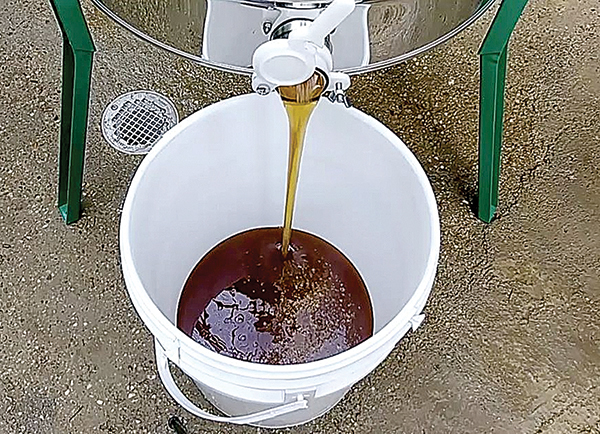
Melondy Phillips
Staff Writer
The detriments of heating honey
When honey is produced on a large scale, what cannot be bottled and sold right away is stored in large 55-gallon drums. The honey can become crystalized while in storage. Once there is a need for more supply on the shelves, the honey is then heated anywhere from 150 to 300 degrees to dissolve the crystallization before it is bottled.
So, let’s break it down and see what this means for the honey.
Inside a hive, the average temperature near the brood area is around 95 degrees. A cooler temperature around 75 to 85 is sustained for the honey.
Depending on nectar brought in, there is a multitude of different types of enzymes which may be present in the produced honey.
One of these enzymes was isolated by chemists during the 1800s. Invertase, commonly called an invert sugar, splits sucrose into fructose and glucose. Diastase catalyzes the breakdown of starch into maltose; mostly amylase; while the enzyme amylase, present in saliva, breaks down complex carbohydrates into simple sugars like glucose. Glucose oxidase reacts with oxygen and glucose to make gluconolactone and peroxide. Gluconolactone helps break down carbohydrates and acts like a food preservative. Catalase, an enzyme of smaller concentration, splits hydrogen peroxide into water and oxygen, working in opposition to glucose oxidase. Even the “sting” enzyme may be present, in trace amounts, when honeybees are injured during the harvesting process.
Raw honey also contains the following micronutrients: calcium, magnesium, manganese, niacin, pantothenic acid, phosphorous, potassium, riboflavin and zinc, as well as amino acids, enzymes and other beneficial compounds.
Phytonutrients, although not essential for keeping you alive like vitamins and minerals, may protect the body from disease and help it to function correctly. The presence of phytonutrients may be why raw honey has shown to be an immune booster as well as showing anticancer properties.
High heat kills all of the heat sensitive nutrients in the natural honey, making it “dead,” but studies have proven that heating honey will also alter its chemical makeup. This process weakens or kills the vitamins, minerals, enzymes, etc., making them ineffective. Invertase, diastases and glucose oxidase are lost or destroyed by heat. Glucose oxidase helps the body fight off viruses and bacteria by producing natural hydrogen peroxide.
There are many antioxidants present in raw honey, one of which is an anticancer agent called polyphenols. Polyphenols are also involved in the prevention of inflammation and may even counter inflammation in the hippocampus to help improve memory and brain health. This important antioxidant is heat sensitive.
While not all of the compounds in honey are destroyed by heat, about 200 different nutrients are weakened or killed at around 99 degrees, and invertase is lost at 104 degrees. Heating honey for too long not only makes it a dead substance but also affects its taste and texture.
Using a microwave to melt the crystals will destroy the important enzymes and demolish the beneficial properties transforming it into a mere liquid sweetener.
Not only will heating honey kill the plethora of beneficial compounds within it, heating it triggers the formation of hydroxymethylfurfaral (HMF). This compound has been the topic of significant study due to the possibility of it being potentially carcinogenic to humans (organ damaging, membrane irritant, and cancer causing). For perspective: This transformation happens when sugars are heated; this includes baked goods, fruit juices, when coffee is roasted, and even when bread is toasted (with amounts increasing from around 14 to more than 2,000 mg/kg). As with everything, use heated sugars in moderation.
Even the filtering process can limit the benefits of natural raw honey. When honey is ultra-filtered (0.001-0.1 µm), it may look pretty and slow the crystallization timeframe but the small amounts of beneficial pollen and other materials present in the honey are removed. This simple stage in processing the honey affects the health benefits received from it. Often, this ultra-filtering process produces a final product that is no longer classified as honey in the United States.
Part 2 of 6


